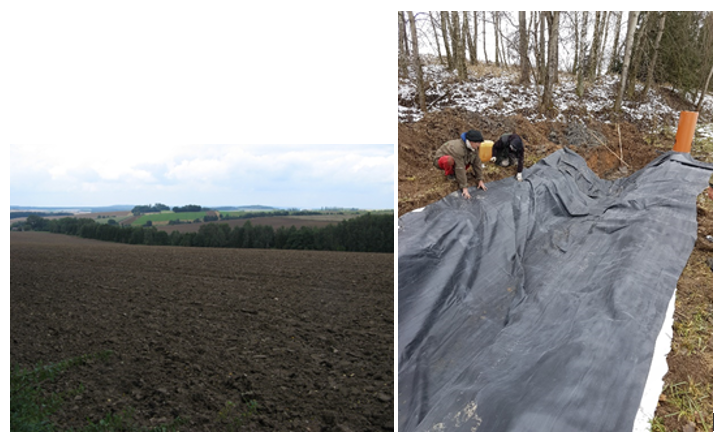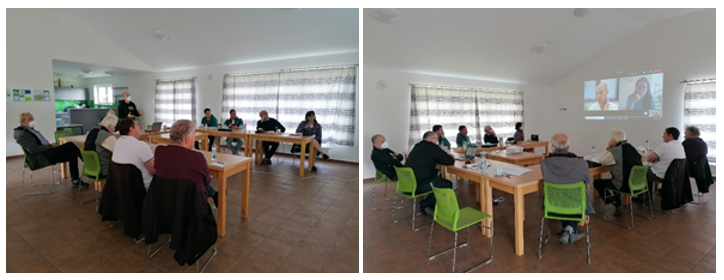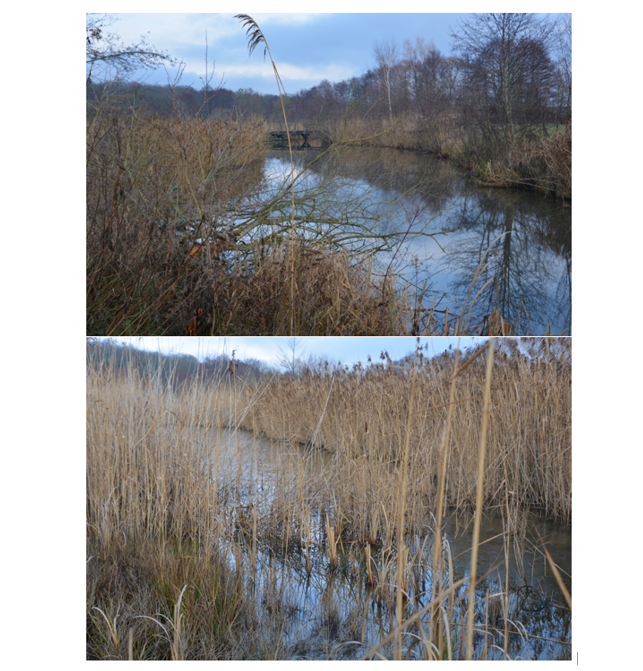Meet Our Case Studies. vol. 1
OPTAIN involves 14diverse case study areas across Europe. One-by-one, we will tell you the story of each one of them, starting with Čechtický Stream and La Wimbe.
Čechtický stream case study area
The Čechtický stream catchment case study is located at the Central Bohemian Region of the Czech Republic. The catchment area is about 72 km2, of which most is used as agricultural land (69%); cropland covers 59% of catchment area. Čechtický stream catchment is a part of the Želivka river basin with Švihov drinking water reservoir where problems with unstable water quality (phosphorus, nitrogen, pesticides pollution) persist. The area is facing a threat of soil erosion on large field blocks, and endangered soil quality by dehumidification, soil compaction, together with increasing periods of drought. There are dense tile drainage systems in this area which are prevailingly still functioning, but problems are increasing over time (technical status, failures, undue runoff, worsened water quality).
Have a look at the Čechtický stream case study on the OPTAIN website.

Fig. 1. Left: Čechtický stream catchment. Right: renewal of trial denitrifying bioreactor on drainage
The kickoff MARG meeting at Čechtický stream
The kickoff MARG meeting in May 2021 was held in order to present and specify information about the international Horizon2020 project OPTAIN. The meeting was attended by invited representatives of municipalities, the agricultural sector, the state administration, and the Vltava River Basin Management Authority.
In connection with the presented information about Natural Small Water Retention Measures (NSWRM), the participants of the meeting were asked to fill in a questionnaire concerning problems and negative processes in the given locality and participants’ points of view on the suitability and effectiveness of the NSWRM.
Based on the questionnaires completed during the workshop and the following discussion, the main problems as seen by the MARG workshop participants are: soil erosion; a lack of water in the soil during the dry periods; occasionally soil compaction / degradation; demanding crop protection due to nature conservation requirements and local water quality problems. Furthermore, some settlements or urban areas are endangered by quick runoff, soil erosion and sediment transport / deposition.
During the discussion, the stakeholders pointed out additional NSWRM, such as soil liming and other soil management and tillage approaches. Further, the issues of design, sizing, placement and management of some NSWRM were discussed, along with the proper financial support – subsidies or other forms of payments.
The information obtained from the stakeholders will help to set strategies and approaches in OPTAIN for designing and evaluating the effectiveness of NSWRM, considering the principles of their feasibility in small agricultural river basins in terms of increasing water accumulation and retention and improving water quality. Emphasis will also be laid on measures on agricultural drainage systems in terms of possibility of their modernization, regulation, professional elimination.

Fig. 2. MARG meeting in May 2021, held in Čechtice town, the Czech Republic.
Autors: PhD Petr Fučík, Ph.D. and team
La Wimbe case study area
The case study in Belgium is implemented in the Wimbe basin and is a sub-basin of the Lesse basin, which is a subbasin of the Meuse basin (Figure 1). The Wimbe basin is about 112 km2 in size and is situated in the continental biogeographical region. The basin consists of the water bodies LE8-10. The municipalities within the basin are Daverdisse, Wellin, Beauraing, Gedinne and Rochefort. The basin’s land use is 2% urban, 21% arable, 11% pasture and 66% forest. The region is an open landscape and representative of the Famenne schisteuse. The region is vulnerable to both high and low flows. Among the problems within the basin are flooding of the meadows and pastures, crop production losses due to droughts or extreme floods, soil erosion, soil degradation, water quality-related issues and potential decline in biodiversity. The region is also vulnerable to nitrate concentration in water that is exceeding or is likely to exceed 50 mg/L and may have undergone or is likely to undergo eutrophication.

Figure 1. Case study basin in Belgium: The Wimbe basin
A 1st Multi-Actor Reference Group (MARG) virtual workshop was organized in Belgium on May 3, 2021. Thirteen participants attended and they play varying roles in the region such as policymakers, basin- and province-level policy implementers, municipal-level actors, and representatives from water- and nature-related organizations. The first workshop aimed to identify and assess existing and potentially promising Natural Small Water Retention Measures (NSWRMs) in the basin. Six NSWRMs were identified and selected by the stakeholders: buffer strips and hedges, restoration and management of floodplains, wetlands, forest riparian buffers, natural stabilization of riverbanks and cover crops (Figure 2). The stakeholders assessed each of these measures based on their experiences and knowledge. They evaluated the measures’ investment and maintenance costs, ecological, economic, and socio-cultural effectiveness, or impacts (Figure 3), limiting factors, strengths and weaknesses, constraints for implementing the measure and identified who losses or benefits and who implements. The selected NSWRM will be quantitatively assessed for their cost-effectiveness in the framework of the OPTAIN project. Based on the outcome of the workshop, an important constraint that limits the application of these measures boils down to the lack of information and knowledge on the measures’ benefits. Communication is therefore crucial; and, in this regard, the project’s goals of developing learning tools and interactive visualization based on quantitative analyses is important to inform the field actors of the measures’ multiple benefits to induce general acceptance of the measures.

Figure 2. The selected NSWRMs and the ranking of these measures are based on their relevance and potential in the Wimbe basin.

Figure 3. Evaluation of workshop participants on the ecological, economic and socio-cultural effectiveness and impacts of the cover crops measure.
The workshop participants had varying opinions on the economic impact of cover crops.

Figure 4. Wetland within the basin.

Figure 5. Fields within the basin.
Autors: Prof. Dr. Peter Goethals and team




















